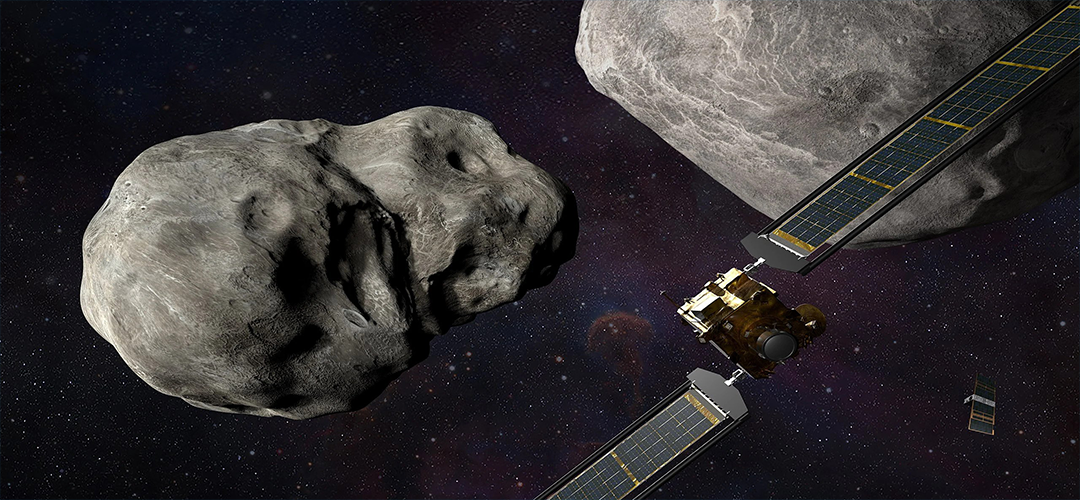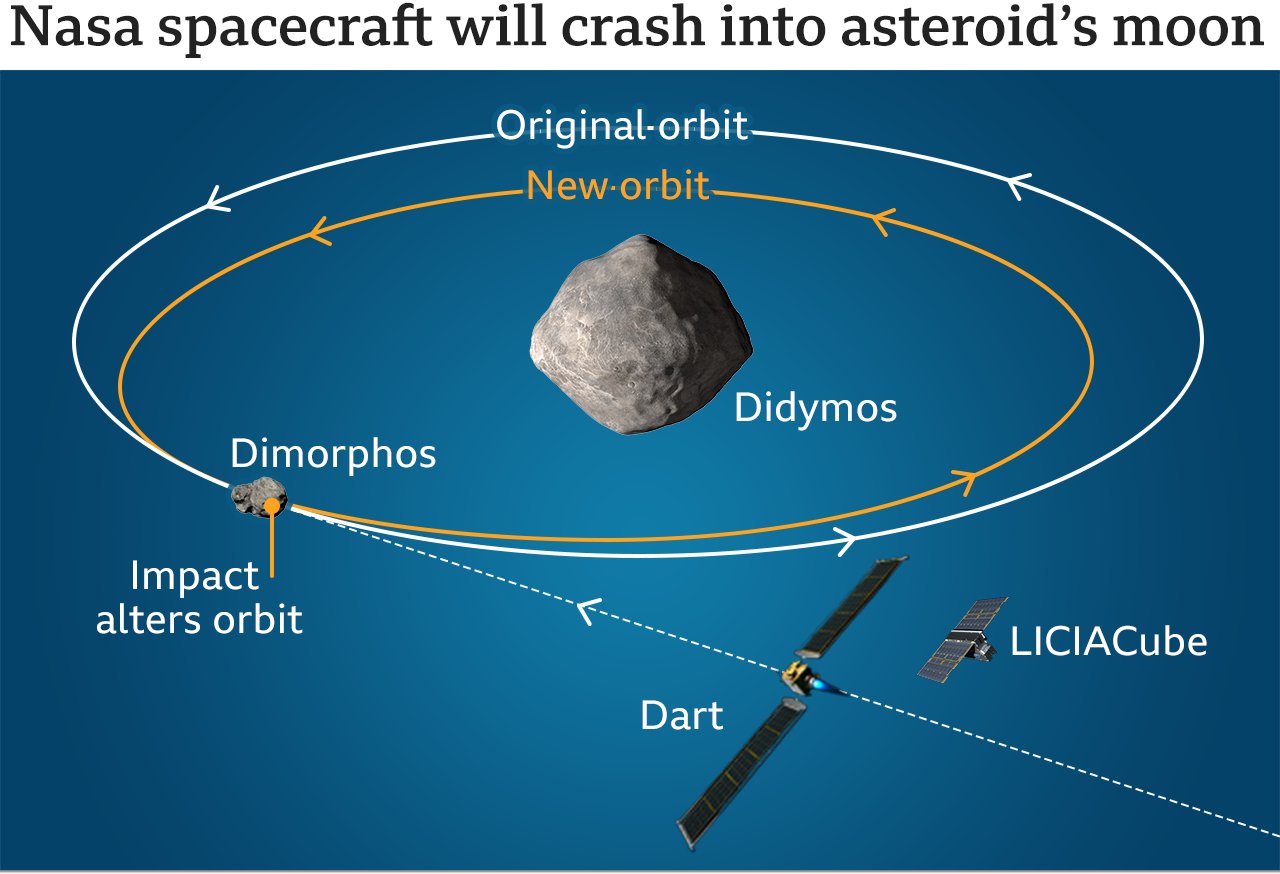THE DART MISSION, A SUCCESS?
October 15, 2022 | Expert Insights

Reminiscent of two 1998 Hollywood films (Armageddon starring Bruce Willis and Deep Impact starring Robert Duvall), mankind, for the first time, played God and deflected the orbit of an asteroid.
According to NASA's Double Asteroid Redirection Test (DART) investigative team, the spacecraft's orbit was successfully modified by its kinetic encounter with the asteroid Dimorphos. This is the first significant use of asteroid deflection technology and the first instance in which humans intentionally changed the motion of a celestial body.
On September 26, a quick-moving spacecraft collided with and altered the trajectory of far-off space rock, achieving the goal of the first mission to test a technology that one day might shield Earth from a devastating asteroid strike.
Background
Beginning with separate plans for missions to test asteroid deflection techniques, the European Space Agency (ESA) and NASA came up with the AIDA (Asteroid Impact and Deflection Assessment) collaboration in 2015. This collaboration involved the launch of two independent spacecraft that would work in concert. That plan called for the launch of DART in July 2021 and AIM, the European spacecraft, in December 2020. AIM would have orbited it to learn more about the composition of the larger asteroid and its moon. On September 26, 2022, DART would strike its moon kinetically as the asteroid neared Earth.
However, Hera was chosen to take the position of the AIM orbiter and would begin monitoring the asteroid four years after the DART collision. Ground-based telescopes and radar must be used to obtain real-time monitoring of the DART impact.
NASA gave its approval in June 2017 to the transition from the concept development stage to the preliminary design stage and in August 2018 to the beginning of the mission's final design and assembly stage. NASA confirmed DART's launch on a SpaceX Falcon 9 on April 11 this year.
NASA's 372 kg (820 lb) Deep Impact space probe's impactor spacecraft had previously used satellite impact on an asteroid for a completely different goal (analysing the structure and content of a comet). It created a crater up to 150 metres (490 feet) broad and emitted 19 gigajoules of energy (the equivalent of 4.8 tonnes of TNT) upon impact.

Analysis
"The orbital period of Dimorphos around Didymos has changed by 4 per cent as a result, and Dart only gave it a slight prod. However, you would want to do it years in advance if you intended to do it in the future." says Dr Nancy Chabot of the Johns Hopkins University Applied Physics Laboratory.
Before the disaster, NASA specified that an orbital period change of at least 73 seconds qualified as a success. At the time, Dimorphos' orbital period around the bigger asteroid Didymos was around 11 hours and 55 minutes. Following the collision, DART scientists verified that the impact shortened the orbit by 32 minutes, with Dimorphos now orbiting the larger asteroid in just 11 hours and 23 minutes. DART outperformed the minimal benchmark by a factor of greater than 25.
However, understanding the influence of the DART on the asteroid requires more than simply monitoring the orbital change. Now the emphasis will be on determining how successfully the spacecraft transferred its velocity to the asteroid. The masses of asteroidal rock displaced by the impact will need to be examined further by scientists.
According to NASA, the recoil from the abrupt explosion of debris exiting the asteroid, like how the air escaping from a balloon sends it racing in one direction, improved DART's push of Dimorphos. The asteroid's leftover debris has created a more than 10,000 kilometres-long track.
Assessment
- The comprehension of the complete impact of DART on its target asteroid depends on this result. Astronomers can better determine whether and how they can use a mission like DART in the future to prevent a collision between Earth and an asteroid if we ever discover one heading our way, as new data is received every day.
- The DART mission may have succeeded as a technology demonstrator, but the jury is still unsure whether it would work in the future. It would all depend upon the size and velocity of the asteroid and accurate data on its surface features, strength, and other specifics for scientists to calculate the size of the impact required to achieve deflection. A successful deflection would also require adequate lead time, as such complex missions cannot be undertaken at short notice.








Comments